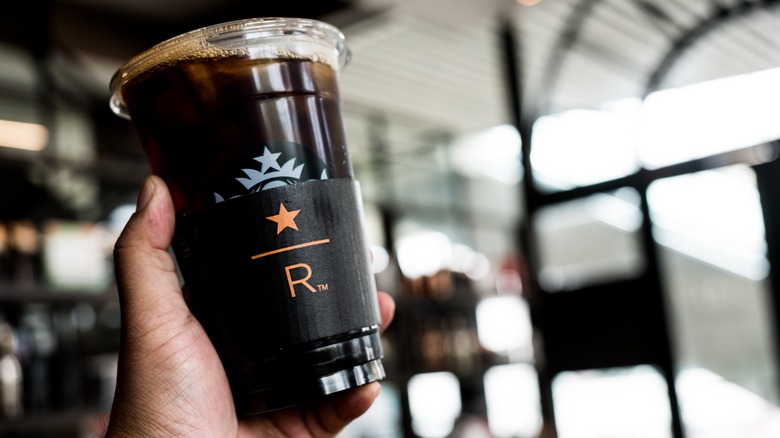Why Do Starbucks Reserve Coffee Beans Taste Different?
CORRECTION 9/24/24: A previous version of this article stated there are seven Reserve Roastery locations globally; There are six.
Any food or beverage with a "reserve" designation conjures notions of exclusivity, premium quality, and superior taste. Merited or not, it typically carries higher price tags and a whole lot of hoopla. In the case of Starbucks Reserve, that all goes double. With its Reserve Roastery locations and limited-batch Reserve coffee beans, the brand often feels more like a wine or whiskey experience, with tastings, discerning clientele, cuppings, and expert Master Roasters and baristas.
Starbucks self-identifies as being "obsessed with the fine art of roasting," which encompasses everything from global coffee teams to exclusive limited-edition microblends, experimental roasting and brewing techniques, and extensive tinkering with things like post-roasting infusions, distillations, nitrogenation, and mixology. As immersive and intriguing as that sounds, it all comes to naught if the beans themselves don't pass muster. Fortunately, they do. Starbucks Reserve coffee beans taste different because of personal attention at each step of the journey.
Small-lot coffee beans arrive green and unroasted at one of only six flagship Reserve Roasteries around the world. The high-tech yet consumer-friendly venues spread across prime locations in Seattle — home to Starbucks' headquarters — and Chicago, New York City, Tokyo, Milan, and Shanghai. No beans get the Reserve designation unless they've earned their stripes at the hands of Master Roaster ingenues, who painstakingly imagine, experiment, and implement a custom blend specific to the beans' characteristics and origins. But there's even more to the magic, with plenty of sleeve-tricks involving bean sourcing, handling, and brewing.
Great care goes into each cup of Starbucks Reserve coffee
For those who say "coffee is just coffee, for goodness' sake," here's a news flash: It's not, at least when you fall deep into the Starbucks universe. With Starbucks Reserve coffee beans, the difference starts even before the roasting process. The company's coffee experts seek out small growers, family-owned coffee farms, or even historic estate plantations, looking for unique characteristics and beans influenced by unusual terrains, high elevations, rich soils, or anything capable of creating a highly nuanced cup of coffee.
Starbucks coffee teams work with these growers and remote coffee cooperatives to identify, support, and foster successful crops. The payoff is often an intense experience in your cup. An early example of relationships resulting in special Reserve blends is the Starbucks Reserve Zambia Peaberry Terranova Estate, which had a limited run in the Reserve family back in 2014. Pricey and divisive peaberry coffee beans arise when a single bean develops inside a coffee cherry, rather than the normal two beans, causing an inherent concentration of intense coffee flavor. Peaberry beans are also smaller than normal, allowing a uniquely even roasting experience.
Some Starbucks Reserve blends are available in standard Starbucks or Reserve stores, while others cluster only in the seven Starbuck Reserve Roastery venues. If you're fortunate enough to visit one of the premiere Starbucks Roasteries, you can experience firsthand the significant difference between standard Starbucks and Starbucks Reserve beans — and how they're artfully brewed, expressed, steeped, steamed, or otherwise extracted for the ultimate cup of java.

